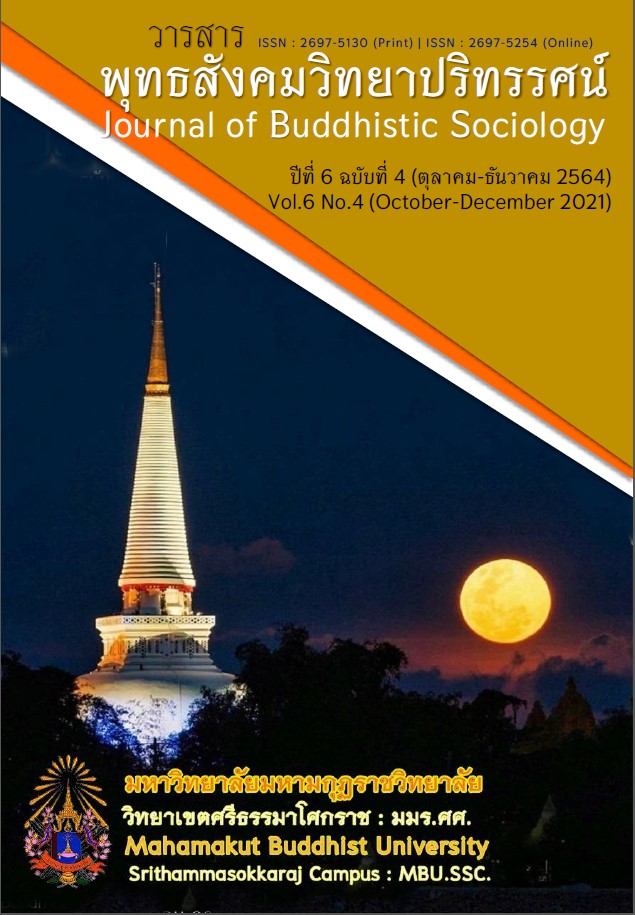DEVELOPING INDICATORS OF SCHOOL BULLYING FOR STUDENTS IN SECONDARY EDUCATIONAL SERVICE AREA OFFICE 18 ์
Main Article Content
Abstract
This research aimed to develop factors, develop indicators, and examine the construct validity of school bullying among students under the Secondary Educational Service Area Office 18. Data were collected using online questionnaires of school bullying among high school students. The sample included 1,067 students from grades 7 to 12 (Matthayom 1 to 6) of 8 schools under the Secondary Educational Service Area Office 18. The data were analyzed using descriptive statistics. The statistics used in the research were mean, standard deviation, and correlation coefficient. Also, exploratory factor analysis (EFA) and confirmatory factor analysis were employed in statistical analysis.
The results revealed that:
School bullying among students under the Secondary Education Area Office 18 had 3 factors and 12 indicators. The first factor was verbal bullying, which had 5 indicators. The second factor was social bullying, which has four indicators. The third factor, physical bullying, consisted of three indicators. The results of examining the construct validity of the factors of school bullying with empirical data revealed that the Chi-squared = 58.48, df = 44, p= .07, GFI= 0.99, AGFI = 0.99 and RMSEA= 0.01. These indices exhibited that school bullying had construct validity.
Article Details
References
กรมสุขภาพจิต. (2561). ไทยอันดับ 2 “เด็กรังแกกันในโรงเรียน” พบเหยื่อปีละ 6 แสนคน. เรียกใช้เมื่อ 20 มีนาคม 2563 จาก https://www.dmh.go.th/news-dmh/view.asp?id=27485
ชุตินาถ ศักรินทร์ และอริษา วัชรสินธุ. (2557). ความชุกของการข่มเหงรังแกและปัจจัยด้านจิตสังคมที่เกี่ยวข้องในเด็กมัธยมต้นเขตอำเภอเมือง จังหวัดเชียงใหม่. วารสารสมาคมจิตแพทย์แห่งประเทศไทย, 59(3), 221-230.
ไทยรัฐออนไลน์. (2562). พบ ม.1 ยิงดับเพื่อนร่วมห้อง "เตรียมการมาจากบ้าน" อ้างแค้นล้อเป็นตุ๊ด. เรียกใช้เมื่อ 29 มีนาคม 2563 จาก https://www.thairath.co.th/news/local/central/1728916
สกล วรเจริญศรี. (2559). การข่มเหงรังแก. เรียกใช้เมื่อ 29 มีนาคม 2563 จาก ejournals.swu.ac.th
Demaray, M. K. et al. (2014). Bullying participant behavior questionnaire (BPBQ): establishing a reliable and valid measure. Journal of School Violence, 15, 158-188.
Dorio, N. B. et al. (2019). School Climate Counts: A Longitudinal Analysis of School Climate and Middle School Bullying Behaviors. International Journal of Bullying Prevention, 1-17.
Green, J. G. et al. (2013). Identifying bully victims: Definitional versus behavioral approaches. Psychological Assessment, 25(2), 651-657.
Hair, J. F. et al. (2019). Multivariate Data Analysis, Eighth Edition. Hampshire, United Kingdom: Cengage Learning.
Huang, Y. Y., & Chou, C. (2010). An analysis of multiple factors of cyberbullying among junior high school students in Taiwan. Journal of Computers in Human Behavior, 26(6), 1581-1590.
Shaw, A. K. et al. (2011). The effect of gossip on social networks. Journal Complexity, 16(4), 39-47.
Udris, R. (2015). Cyberbullying in Japan: An exploratory study. International Journal of Cyber Society and Education, 8(2), 59-80.
Ybarra, M. L. et al. (2019). Perceptions of middle school youth about school bullying. Journal of adolescence, 75, 175-187.


